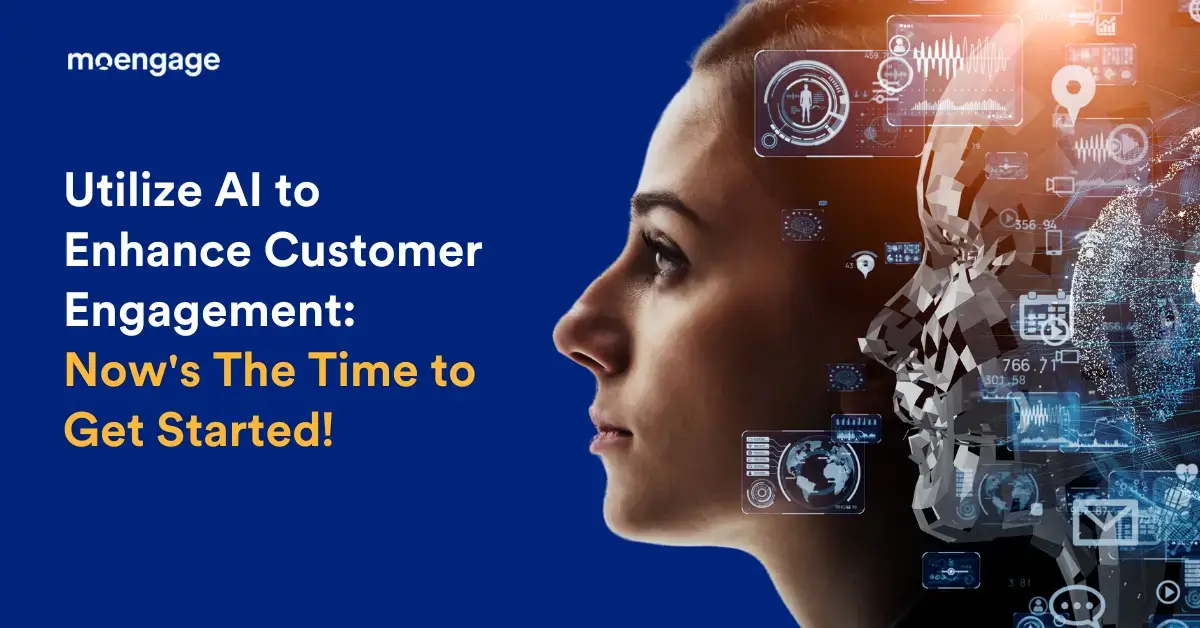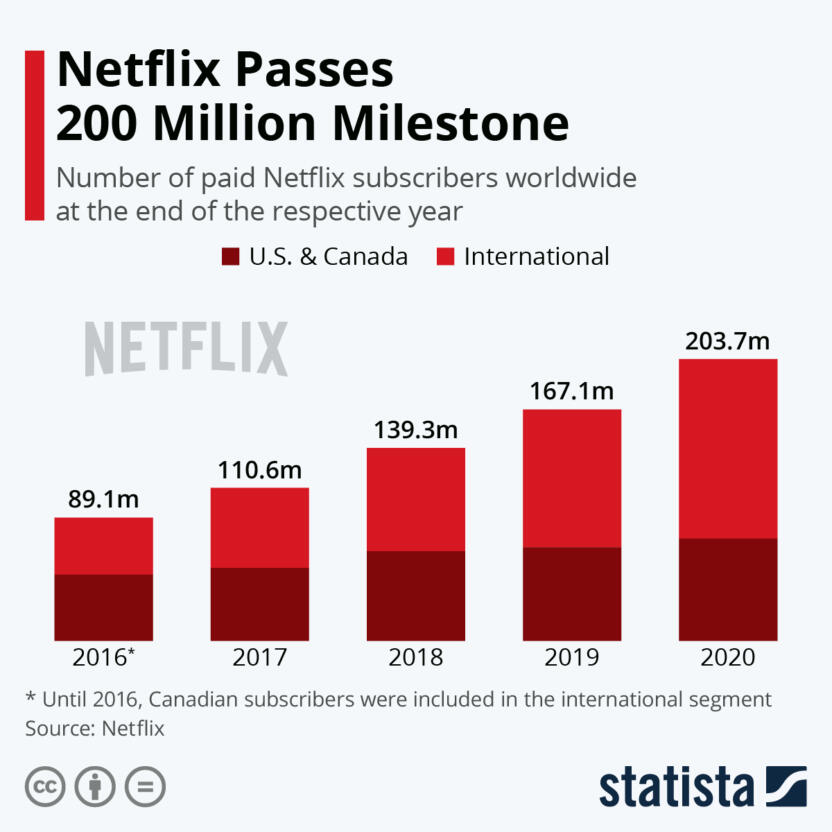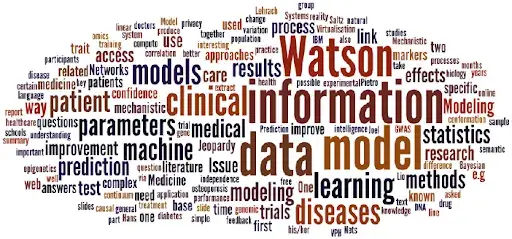How B2C Brands Can Use AI to Enhance Customer Engagement

Reading Time: 9 minutes
The popularity of Artificial Intelligence is soaring among B2C companies. Yes, Chat GPT is just a tiny drop in the ocean.
In fact, Dataconomy states that AI has progressed so much to become the most revolutionary technology in human history.
Even Gartner claims that the enterprise use of AI and its technologies has increased by 270% in the last few years.
But what’s the reason behind its rapid adoption?
For one, it revolutionizes customer service and experience, which results in positive customer engagement.
Can you use AI for your niche use cases? Absolutely!
This article covers the benefits of AI in customer service and engagement.
Benefits of AI in Customer Service and Engagement
It’s critical to understand what AI means in customer experience (CX) to understand the impact of AI on customer engagement.
Simply put, it is a way to leverage data-backed predictive insights, and recommendations, or even generate content through chatbots, machine learning, and conversational UX to maximize effective interactions and deliver exemplary CX.
Customers increasingly look for real-time and consistent customer support across channels, three-quarters of customers, to be precise, as per McKinsey. Companies are becoming more adaptive toward this age’s ace in the hole – AI to match the pace.
Here’s how Artificial Intelligence technologies and tools add to an ongoing overhaul of customer experience and service.
Know What Customers Don’t Tell You
One of AI’s most significant use cases in the B2C paradigm is that it has dramatically impacted businesses’ ability to understand their customers deeply.
AI’s predictive analysis capabilities analyze each customer’s past behavior, preferences, and purchase history to predict the shifts in customer trends, explore current needs, and how they will behave.
Here’s an AI customer experience example: Say you used a customer satisfaction NPS to see how loyal customers are.
With predictive analysis, you can spot detractors and potential deserters who gave you low scores so you can improve their experience and satisfaction levels before it’s too late.
It is also very useful in a web development or updating stage, as it helps to be more user-oriented.
Automate Repetitive Tasks
AI fundamentally helps automate repetitive, time-consuming processes such as resolving recurring and minor customer issues and queries. For example, AI chatbot builder can save companies time and resources to focus on customers on the verge of churning.
Round-the-clock Operations
Unlike humans, AI can handle multiple operations simultaneously and is not bound by the same limitations.
And so, you can establish AI-centered processes for customer service, data and customer segmentation, social media monitoring, and so on. This way, you will provide real-time customer assistance and boost customer engagement and satisfaction.
For example, you don’t need a team with support representatives covering multiple shifts; you can launch a chatbot to help customers with basic inquiries.
Here’s another AI customer experience example: Have you ever messaged a business on WhatsApp or Instagram late at night?
As soon as you send the text, you get a reply saying your inquiry has been acknowledged and someone will assist you as soon as the business timings open. That’s AI at work.
Now that you know the benefits, you might be wondering: How to get started? Which of your business processes requires an AI overhaul first? How can you customize AI’s application for your business?
So, why not seek answers to these essential questions right now?
How to Use AI to Improve Customer Experience and Engagement?
According to the McKinsey report mentioned above, there are five levels on the AI maturity scale where you can rank companies from least or most AI-savvy.
The companies on level five using AI can deliver proactive and service-led engagement, allowing them to hand over 95% of service interactions to AI.
Here’s a glimpse of a customer service process built on the back of AI

Impressive, right?
You can also reach higher on the maturity scale by implementing these use cases of Artificial Intelligence.
Personalization and Product Recommendations
Let’s take a personal example to understand personalization.
Do you enjoy your ‘Daily Mix’ playlist on Spotify made just for you? How about a Spotify Wrapped report on your top-most played songs?

Thanks to AI, Spotify has created a unique customer listening experience. It tracks each customer’s music preferences, such as genres, artists, most played songs, and so on, to suggest personalized playlists, new music recommendations, etc.
Let’s look at another industry giant at play, Netflix. It’s like that cool kid on the block everyone wants to hang out with, so much so that its retention rate is soaring, with 203.7 million subscribers globally.

So, what makes their customers stick? The best and most personalized content recommendations.
Netflix offers a holistic multi-channel personalized experience by personalizing its marketing campaigns.

Like Spotify, the AI-powered Netflix algorithm analyzes preference patterns in customers’ choice of content to recommend what appeals to the customers. It can increase each customer’s watch time and boost engagement on the platform.
Both the AI customer experience examples above teach us to move beyond the personalization threshold and focus on offering a holistic, personalized customer experience.
Also read Website Personalization Examples: How Are Leading Brands Doing It?
Virtual Assistants and Conversational AI
According to IBM, Virtual agents such as chatbots effectively reduce the average cost per customer service interaction to $1.55 per interaction, which otherwise ranges between $5 to $12.
Chatbots are a perfect entry point for incorporating AI into your business. Companies across industries, such as ride-hailing, eCommerce, etc., leverage virtual assistants to save costs on interactions and human resources.
How? The same report from IBM states that virtual agents can manage 80% of routine tasks and customer queries using AI.
Instead of going all out on AI, we recommend blending the best of both worlds: AI and human touch.
For example, you can transfer essential chat tickets to human agents that require assistance beyond the capabilities of a chatbot. Doing so will help you improve your first contact resolution rate (FCR).
Since chatbots use Natural Language Processing (NLP), it’s comfortable for customers to interact whenever they require assistance. You can also leverage chatbot triggers to make your chatbot pop up at crucial customer touchpoints.
For example, you can set a trigger for your chatbot whenever a customer is about to leave your website without completing a purchase.
The chatbot can ask them what they need and ensure they complete the purchase with positive interaction and experience.
*Pro Tip: You can use chatbots to capture leads. You can ask website visitors what they want and collect their contact information.
Customer Feedback Sentiment Analysis
Another interesting way to up your level on the AI maturity scale is to use the powers of AI to decipher core qualitative sentiment insights from customer feedback.
Most companies stay stuck on the written word in the feedback but never peek behind the curtain to see what’s actually pulling the strings, i.e., customer emotions.
That’s where AI gives you an edge.
Using sentiment analysis technology, you can gauge the overall customer sentiment toward your company, products, services, and experience. You can measure emotions in the feedback, such as joy, fear, anger, frustration, etc.
Sentiment analysis also offers word clouds highlighting the most used words in the feedback, so you know what customers think and feel.

Predictive Analysis
We briefly brushed through the power of predictive analytics and what it does, but there is so much more to it.
As Paul Gaynor, a partner at PwC, puts it, “Predictive analytics help you know what might happen, prepare a response ahead of time, get ahead of the risks, and influence the outcomes…It’s like looking ahead with a telescope, not glancing through the rear-view mirror.”
You can deploy predictive analytics in high-risk processes to evaluate potential risks and analyze upcoming customer behavior and preference trends.
For instance, you can incorporate hyper-personalized marketing in your business to engage the right customers, at the right time, with a suitable marketing copy and campaign.
Here’s what Bindu Thota, VP of Technology for Zulily, has to say: “Through data-driven technology, we can create a personalized collection, incorporating thousands of products, every single day — a customer experience that is truly relevant and engaging…That is the human touch.”
For example, if you’ve ever shopped from the H&M mobile app or site, you’ll notice how it keeps showing product recommendations like ‘similar products,’ ‘you might also like,’ and so on.

That’s a small part of what predictive analytics can do for your business to personalize it.
More so, you can even anticipate customers’ needs before they have made a definitive decision through predictive analytics.
Enhanced Marketing Automation
Automating your multi-channel marketing and social media management is another way to leverage Artificial Intelligence’s benefits to exponentially grow your business.
For example, you can personalize your messaging and email campaigns, such as sending personalized email newsletters and also automating their delivery. With AI, you can generate targeted email campaigns that capture and convert customers.
In doing so, you save time and resources and enhance the overall efficiency of your email marketing endeavors.
You see, AI not only enables you to personalize your email campaigns but also automates them for effortless results.
Social Media Monitoring
The automation capabilities of AI are not limited to just email automation. You can also automate social media management tasks such as scheduling and publishing posts, responding to comments and messages, and analyzing social media metrics.
You can use tools like Hootsuite, SocialPilot, Salesforce, etc., to automate your social media management.
In times like this, when social media is all-prevailing, you need to make it a part of your brand experience and a positive one at that.
Social media is where your customers are, so you’ll find positive and negative word of mouth for a big chunk of your potential customers to see.
Thus, it makes it indispensable for businesses to analyze customer sentiment and proactively acknowledge and address their concerns on social platforms.
Voice Assistants
Do you remember your pre-Alexa experience on Amazon? Doesn’t it seem so inefficient now?

From browsing multiple products to purchasing one at the command of your voice, virtual voice assistants deeply personalize customers’ experience and assist them throughout their journey on your site.
Beyond that, they become an everyday part of customers, integrating into customers’ lifestyles to work as their personal assistants.
You can also incorporate voice assistants on your digital platforms through APIs to take your CX a notch higher.
Customer Segmentation and Targeting
Segmenting customers is as critical as identifying the right audience. It helps you create personalized strategies for each customer segment.
As a B2C brand, you can use AI-powered tools to segment customers into categories based on their behavior, preferences, demographics, and other such characteristics to launch tailored campaigns and set your brand messaging accordingly.
You can also identify the most effective channels to reach your customers based on their segments and create strategies around those platforms.
Enhancing Customer Experience with AI Best Practices
Here are a few best practices for employing AI as a B2C brand to optimize this magnificent technology.
- Identify a specific problem or area where implementing AI will help.
- Keep the customer at the center of your AI strategy. Ensure that your AI solution is designed to provide a better customer experience and meet customers’ needs and preferences.
- Ensure your AI-powered customer experience is transparent and ethical and complies with data protection laws to keep customers at ease.
- Much like leveraging AI tools, start hiring or training skilled AI professionals to implement AI solutions effectively.
- Keep a vigilant eye on your AI processes and solutions to keep the training data and the implementation of insights relevant.
- While AI can improve customer experience, ensuring that the customer experience remains human and personal is vital. Use AI to augment human interactions and provide personalized experiences.
- Always test and iterate your AI solutions before deploying them into your processes to ensure they provide the desired results.
Artificial Intelligence: The Present and Future of B2C Players
The exponential adoption of AI in all B2C sectors, like finance, eCommerce, etc., is owed to the increasing demand for personalization and better experience by customers.
By analyzing the AI implementations we discussed above in the context of your business, you can start by picking the use cases most relevant to your business model and customers.
The bottom line is – start SOMEWHERE. Because if you’re not ahead in incorporating AI into your business, you’re not in the game at all.







